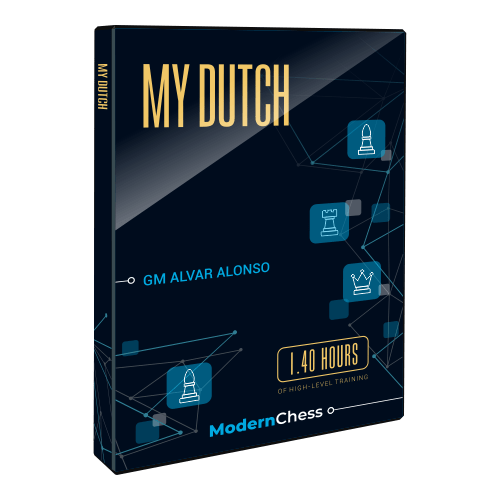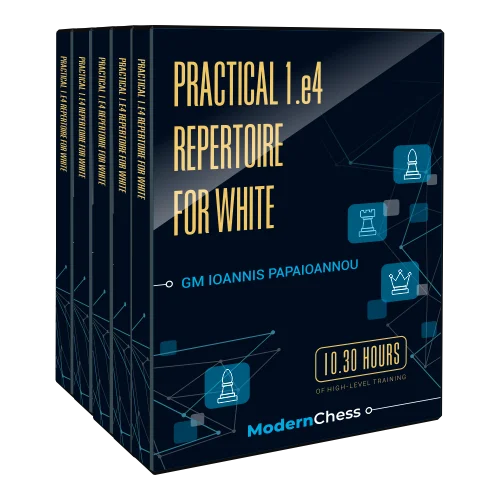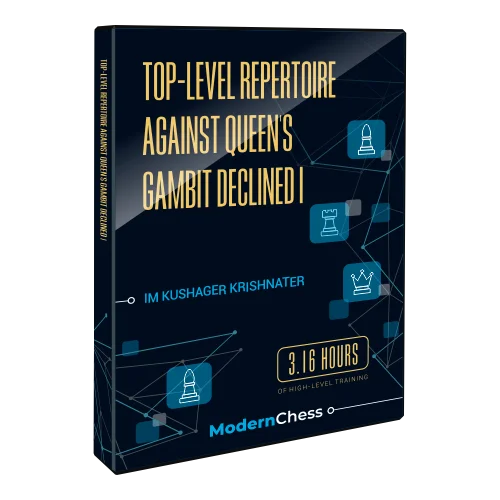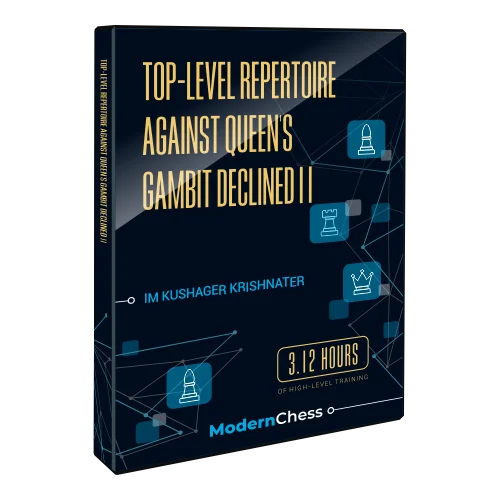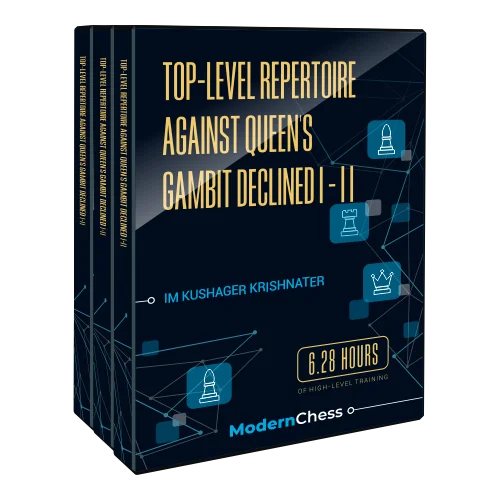We are happy to inform you that GM Alvar Alonso has published his first course for Modern Chess - My Dutch. Having tremendous experience with this opening, GM Alonso provides you extremely practical and easy-to-learn repertoire. The database consists of 11 theoretical chapters (the last one is a bonus), 15 interactive test positions, a Memory Booster, and a Video Version (1 hour and 40 mins Running Time).
We are happy to inform you that GM Alvar Alonso has published his first course for Modern Chess – My Dutch. Having tremendous experience with this opening, GM Alonso provides you extremely practical and easy-to-learn repertoire.
According to him, Dutch Defence has huge practical value since most of the players (even strong GMs) do not dedicate enough time to this tricky opening. Additionally, when your opponent sees the move 1…f5, subconsciously he wants to punish you. All these considerations make the Dutch Defence a perfect choice in terms of playing for a win.
The database consists of 11 theoretical chapters (the last one is a bonus), 15 interactive test positions, a Memory Booster, and a Video Version (1 hour and 40 mins Running Time).
Now, we shall take a look at the different chapters.
The starting position of the current repertoire arises after 1.d4 f5
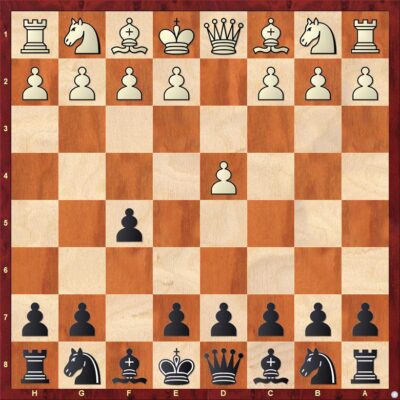
Even though 2.g3 is considered to be the main move, White can play everything here. Chapter 1 is dedicated to White’s rare options on move 2. GM Alonso examines 5 continuations – 2.g4, 2.h3, 2.h4, 2.e3, and 2.Qd3. Black does need to know a lot in order to fight against all these moves. In Chapter 1, the author provides a simple solution to each one of them.
Chapter 2 is dedicated to the so-called Staunton Gambit arising after 1.d4 f5 2.e4

In his comments, GM Alonso, writes, “Writing these lines I realize I actually never faced the Staunton Gambit in a game. It’s not very common at higher levels as I only started playing the Dutch when I reached 2500. Can be tricky if you don’t know but overall it’s not a menace I’d say.”
The main line goes 2…fxe4 3.Nc3 Nf6
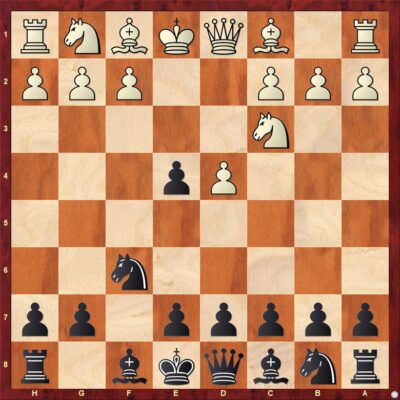
At this point, White has two main options – 4.Bg5, and 4.f3. In both cases, Black easily solves the opening problems. He just needs to know a few precise moves.
Chapter 3 is dedicated to 2.Bg5.
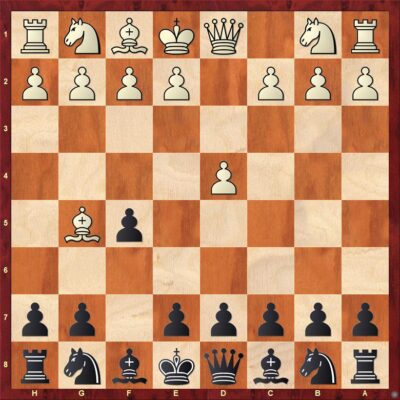
This might be one of the most challenging moves. White creates an annoying pin and also wants to pressure quickly our weakened kingside. At this point, the author suggests the system with 2…g6. This move has been played by Anton, Lagarde, Kamsky, Bartel, and more recently Sadhwani, maybe the strongest players that recently relied on the Dutch. Black prioritizes development and looks for reactions in the center.
In this chapter, GM Alonso proves that Black’s flexible position allows him to create enough counterplay against all of White’s options.
Chapter 4 features line 1.d4 f5 2.Bf4
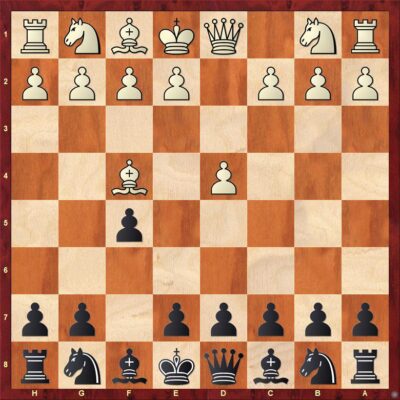
The London way is quite a good answer to the Dutch. The author remembers having issues in friendly games to counter the go-to setup with Nf3-e3-Be2-h3-Bh2 and then c4-c5 push. After having done his homework, Alonso comes up with the following suggestions – 2…Nf6 3.e3 d6
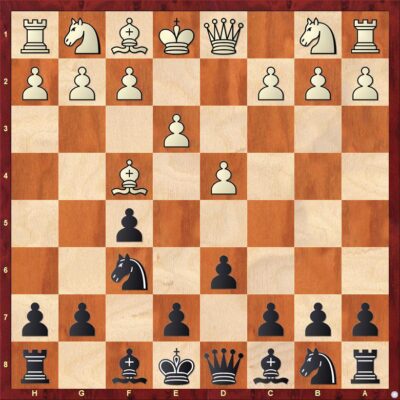
If Black wants to play a setup based on …g7-g6 he should start with this move since the immediate …g7-g6 will be answered with h2-h4. If White keeps playing in a London fashion, Black will follow with …g7-g6, …Bg7, …0-0, and …Nc6, trying to get …e7-e5. Black has good counterplay in the arising positions.
White can also start with 4.Nc3 when Black’s most precise reaction is 4…e6. Most probably, Black’s next move is going to be …Nc6, planning …e6-e5.
The main position of Chapter 5 arises after 1.d4 f5 2.Nc3 Nf6 3.Bg5 d5 4.e3
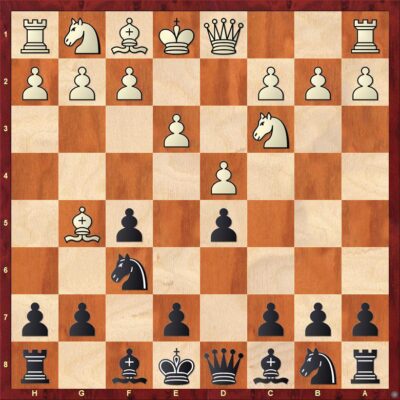
This calm approach just wants to enjoy the dark squares we left unattended. Retreating the c3 knight and going for c2-c4 is usually the conventional plan. The main line goes 4…e6 5.Nf3 Nbd7
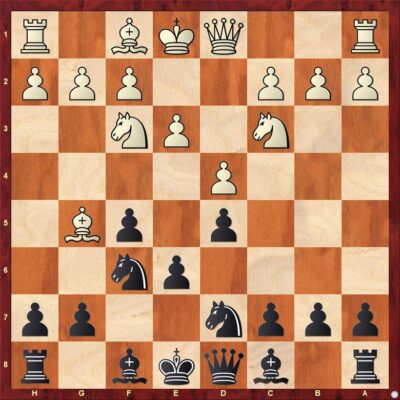
Black looks to go for c7-c5 quickly and stops White’s idea to go for Ne2 and c2-c4. The analysis shows that it’s not that easy for White to carry out c2-c4 under favorable circumstances.
Chapter 6 is dedicated to the position arising after 1.d4 f5 2.Nc3 Nf6 3.Bg5 d5 4.Bxf6 exf6
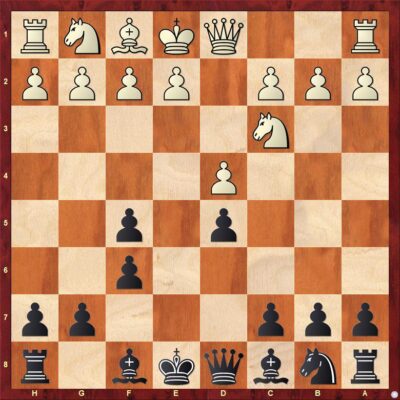
The combination of f6-f5 reduces a lot our flexibility and doing typical maneuvers like Nc6-Ne7-Nc8-Nd6 to make good use of the e4 square, might be less achievable as the f8 bishop would also love the d6-square. We need to take into account that we have more space in general but it is a hard puzzle to solve in the first moves. If White doesn’t play great we can get a really sound advantage. GM Alonso points out that the correct move orders are extremely important in this line.
In Chapter 7, the author covers line 1.d4 f5 2.Nc3 Nf6 3.Bf4
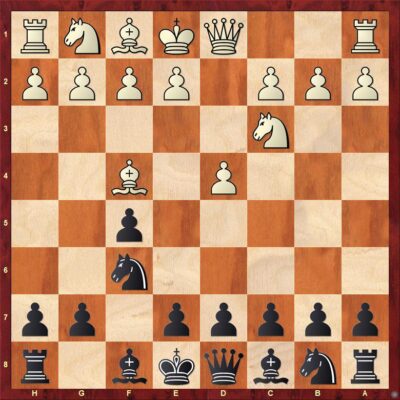
This is a creative combination of ideas. Here 3…g6 is very bad as 4.h4 almost wins so it is possible you’ll see it in a game. Therefore, the main recommendation here is 3…e6 planning to answer 4.e3 with 4…Bb4. Alonso gives 4.g4 as a main line. Nevertheless, Black keeps excellent chances in all the lines.
The next two chapters are dedicated to the position arising after 1.d4 f5 2.c4 e6
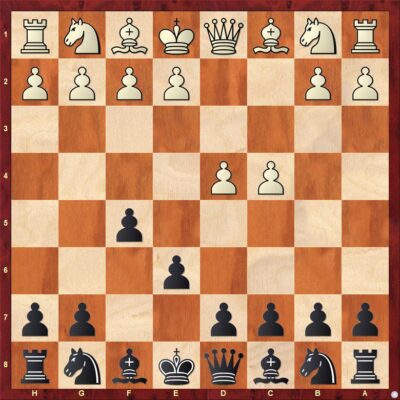
In Chapter 8, GM Alonso examines 3.Nc3 Nf6 after which White has a variety of moves. In general, depending on White’s move, Black will either play …Bb4 followed by …b7-b6 or opt for a Stonewall Setup. The arising complex positions are quite playable and usually all three results are on the table.
Chapter 9 covers the setup 3.Nf3 Nf6 4.e3 b6 5.Be2 Bb7 6.0-0 Be7
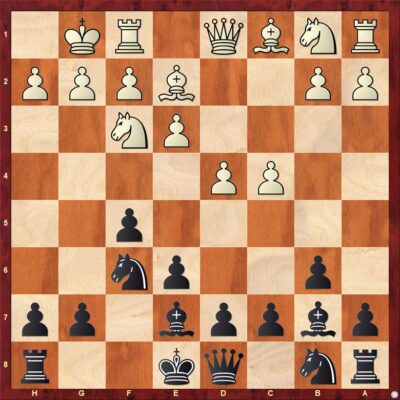
Black has nothing to worry about in this position. He is ready to follow with …0-0 and …Ne4. In many cases, rook lift via the 6th rank is possible.
Chapter 10 is dedicated to the main line with 2.g3. In this case, the suggestions of GM Alonso are based on Stonewall. Of course, he goes for different versions of the Stonewall depending on White’s move order.
For instance, we shall take a look at the classical move order – 1.d4 f5 2.g3 e6 3.Bg2 Nf6 4.Nf3 Be7 5.0-0

At this point, GM Alonso suggests starting with 5…Ne4. Here is his take on this move:
“5…d5 is obviously fine as well and Rapport showed the playability on many occasions. But after 5…Ne4, White has the extra options 6. Nfd2, 6. Ne5 and 6. d5!?. You can go straight for 5…d5 if you don’t want to tease your opponent, but I like to allow options so my opponent can feel “smart” or “tricky” and then strike back. This might help you appreciate how the Dutch often works and maybe you see more ways to play in the future! I feel the old approach (5…0-0 6. c4 d6) is unplayable.”
Against White’s alternative setups, GM Alonso is building the Stonewall in a more straightforward way. Besides providing some really interesting analysis, he also explains the main positional and tactical ideas in this structure.
The database finishes with a Bonus Chapter (Chapter 11) showing how Black can play the Stonewall structure against the Catalan. Note that this chapter is designed to enrich your understanding but not to provide a definitive solution against the Catalan.
Outline:
Chapter 1 – 1.d4 f5, Rare Second Moves
Chapter 2 – 1.d4 f5 2.e4
Chapter 3 – 1.d4 f5 2.Bg5
Chapter 4 – 1.d4 f5 2.Bf4
Chapter 5 – 2.Nc3 Nf6 3.Bg5 d5 4.e3
Chapter 6 – 2.Nc3 Nf6 3.Bg5 d5 4.Bxf6
Chapter 7 – 1.d4 f5 2.Nc3 Nf6 3.Bf4
Chapter 8 – 1.d4 f5 2.c4 e6 3.Nc3
Chapter 9 – 1.d4 f5 2.c4 e6 3.Nf3
Chapter 10 – Main Line – 2.g3
Bonus Chapter – Reaching Dutch from Catalan
About the Author:
GM Alvar Alonso [FIDE 2572]
is a Spanish Grandmaster, analyst, and coach. He stood out early in his career, winning the Catalan and Spanish age-group championships, and obtaining good results in European and World Championships. In 2011 he won his first title of Spanish Absolute Champion, at the age of 19, being the second youngest Spanish Champion in history.
Despite studying mathematics and having a full-time job, GM Alonso has remained a regular player in Open and Team tournaments, keeping his ELO in 2500+ points. In 2018, he won the very strong Sitges Chess Festival scoring 8/10 ahead of extra-class players like Vassily Ivanchuk and Dmitry Andreikin (former World title candidates). In addition, Alvar is a coach of junior players.
